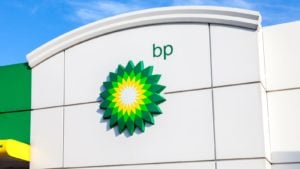BP Plc (NYSE:BP) has had a rough year. In 2020, BP stock is down over 54%. Nevertheless, the stock is likely worth at least 20% more than its present price of $17.27, based on its historical dividend yield.

Due to the Covid-19 pandemic, oil and gas prices have tumbled amid reduced energy use worldwide . But the fact that BP had to cut its dividend by 50% in August also has not helped its shares.
In Q2, BP lost over $16.8 billion, including a $10.9 billion non-cash writedown. Moreover, the company’s recently unveiled, dramatic plan to transform into a zero-carbon energy company have made investors uncertain about the company’s outlook. Of course, the market doesn’t like uncertainty.
One analyst called BP a “broken company.” The author of The Daily Drilling Report is highly skeptical of BP’s plans to pivot to wind energy. Moreover, he says that it is not clear that BP will make anywhere near as much money in renewables as it does with oil and gas.
Other analysts, including those at RBC, say that BP needs to show how it will deliver on its pledges, including its promise to reach net-zero carbon emissions by 2050. BP stock is close to a 25-year low as a result of widespread doubts about its strategy.
The Valuation of BP Stock After the Dividend Cut
As you can see in the chart on the right, the stock’s average dividend yield in the past ten years has been 5.5%.
Even though the dividend was cut to $1.26 on an annualized basis recently, at today’s price of $17.27, the dividend yield is 7.44%. That implies that BP stock is worth considerably more than its current price.
Let’s use the stock’s average yield over the last decade of 5.5%. I divided the $1.26 per share dividend by 5.5% and obtained a price target of $22.91 per share. That’s more than 30% above the current price of BP stock.
My price target assumes that the stock reverts to its mean average yield. But what if it only returns to its 2019 yield of 6.12%? Then my price target would be $20.59 per share (i.e., the $1.26 dividend per share divided by 6.12%). That’s about 20% above the current stock price.
And what if BP only moved to its average 2020 yield of 6.75%? (Remember, in the first half of the year, the stock had a higher dividend.) The resulting price target would be $18.65 per share. But that is still nearly 10% above today’s price.
The table on the right shows all three of these possibilities. The average of all the yield scenarios I discussed is 6.08%. That implies a price target of $20.72 per share which is about 20% above today’s price.
What To Do With BP Stock
The most fundamental issue for dividend investors who are considering buying BP stock is whether the company can afford to pay its current dividend. Here is a simplified answer to that question.
First, during the second quarter, BP’s cash flow from operations (CFFO)came in at $3.737 billion. But its capital expenditures were $3.018 billion. That leaves it with $719 million of free-cash flow that it can use to pay its dividend.
Its annual dividend costs $4.252 billion or $1.063 billion per quarter.
So there is a gap between its quarterly FCF (based on today’s oil and gas prices) of $719 million and the quarterly dividend of $1.063 billion. The deficit is $344 million, or about a third of the dividend’s total cost. That means that, assuming oil and gas prices stay constant, each year BP will have to obtain about $1 billion of its $4 billion of dividend costs from sources other than its operations.
That probably will not be too difficult. For one, the company could lower its capital spending. Secondly, it could sell assets. Third, it could borrow money to pay the dividend. And fourth, oil and gas prices could rise, pushing up its FCF. So it has lots of options.
That makes me believe that the new, lower dividend is affordable for BP. Therefore the patient owners of BP stock should do reasonably well, in light of the 7.4% dividend yield and the stock’s potential gain of 20%.
Returns on an Investment in BP Stock
For example, let’s say it takes two years for the stock to rise by 20%. The stock’s owners would receive two years of dividends at an average yield of about 7.0% (the yield would be lower in the second year as the price rises).
Therefore the total return would be 20% plus 7% times 2, or 20% plus 14%, or 34%.
That is a reasonably good return for most investors.
On the date of publication, Mark R. Hake did not have (either directly or indirectly) any positions in any of the securities mentioned in this article.
Mark Hake runs the Total Yield Value Guide which you can review here.
